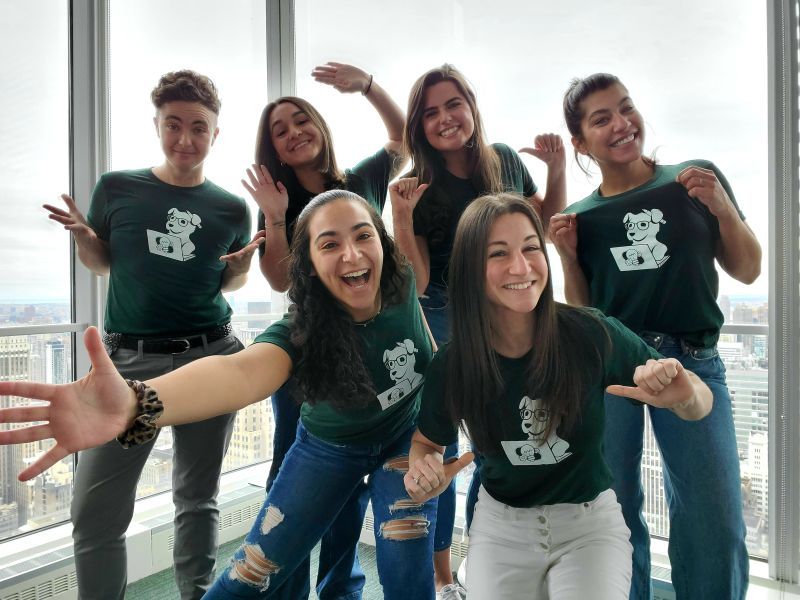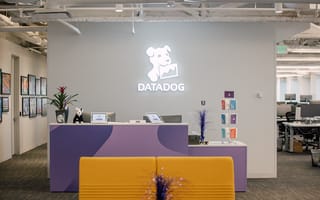The next step in one’s career doesn’t have to be into a different company. Aly O’Connor has experienced this firsthand.
After spending her first few years at Datadog as a recruiting lead, O’Connor became the company’s first manager of talent management. The shift included doing what O’Connor described as “totally different work at a totally different scale.”
In other words, the new role offered her the opportunity to grow and challenge herself.
“Through my personal internal mobility journey at Datadog, I’ve been able to work with different stakeholder groups, gain increased exposure to global teams and build large-scale programs with immense impact,” O’Connor said. “This was a big personal leap and a chance to flex a muscle I hadn’t had an opportunity to yet.”
In her role, O’Connor helps fellow Datadog team members similarly benefit from in-house moves by leading the company’s internal mobility program, which helps identify the right opportunities and avenues within the company that talent can pursue.
“Internal mobility gives employees an opportunity to try something new while holding onto valuable knowledge and relationships earned in their time at the company,” said O’Connor, who noted that a lot of internal moves are seen across the company already, the highest volume being in the engineering and sales teams.
O’Connor is focused on realizing a system that provides latitude for employees while driving impact for the company. Learn how below.

To start, briefly describe your role and responsibilities.
I’m Datadog’s talent management manager. My role is to design and build programs that help our employees grow in their careers.
I’ve built some of our first global talent management programs that give leaders the tools to assess talent and drive career growth on their teams. Right now I’m putting a ton of effort into rounding out our internal mobility program: defining what internal mobility means to Datadog, refining our data approach so we can understand mobility and the impact of internal moves, and solving how we give equal opportunity for Datadogs to apply to open opportunities.
Tell us more about Datadog’s internal mobility program. What is its goal and what does it entail?
We define internal mobility as a change in team, including working with a new product or new customers, or a change in responsibilities, which may look like changing departments and doing a different job.
Datadog has had a very responsive approach to moving talent that fits our hypergrowth environment. Our engineering teams have been active in moving talent across product lines, which has helped meet team needs and provide our employees with technical growth.
“Datadog has had a very responsive approach to moving talent that fits our hypergrowth environment.”
Other teams, like sales, make internal mobility frictionless through their career pathing design. In groups like this, the natural career progression will include an internal move, baking in an opportunity to gain exposure to various customers.

What does leading the internal mobility program involve? How do you adapt the program based on employee feedback?
All career growth programs we build are based on data and feedback so we’re designing with our business’s needs in mind. Leading the program has meant building the tools to make sure internal mobility feels seamless to employees and managers. This includes work across a few different systems and many different teams. Now and in the future, leading the program means partnering closely with the business to be more strategic and deploy flexible options for staffing open roles.
Datadog has done an incredible job of fostering career mobility organically. About one in three Datadogs move internally each year, be it through team moves, promotions or location changes.
People are making big changes and are learning new things while staying at the same company. Our most common moves are within our sales and engineering teams. We also see moves across teams, sometimes as a result of our Embed program where folks from teams temporarily join or “embed” on another team for exposure and training. This is a path someone on our Solutions team may take if they’re interested in becoming a software engineer.
We’re looking to understand the impact that these moves have and what “healthy” mobility is. For us, healthy mobility means we’re seeing talent moving through the business to meet needs as they arise.
We have two overall goals for internal mobility. Our first is to make sure employees are aware of open opportunities they may be interested in. That’s achieved by making sure opportunities are posted on our internal job board, marketing opportunities to employees and making sure we have a seamless internal recruitment process.
“For us, healthy mobility means we’re seeing talent moving through the business to meet needs as they arise.”
The second is to make sure internal moves are having a positive impact. We know that by analyzing mobility data and measuring the employee’s success in their new role, we can glean information from performance, promotion, engagement and exit survey data.
What does the future hold for Datadog’s internal mobility program? What do you hope to achieve with it?
The future includes a lot more intention from the business’s side to get opportunities in front of employees. We’ll continue to be hyperfocused on data and employee feedback.
We want our results to show that internal mobility is helping to strengthen our culture. Continuing to have happy, engaged and growing employees is important to us and through the program we hope to also see an increased empathy and transfer of skills and knowledge across teams.






